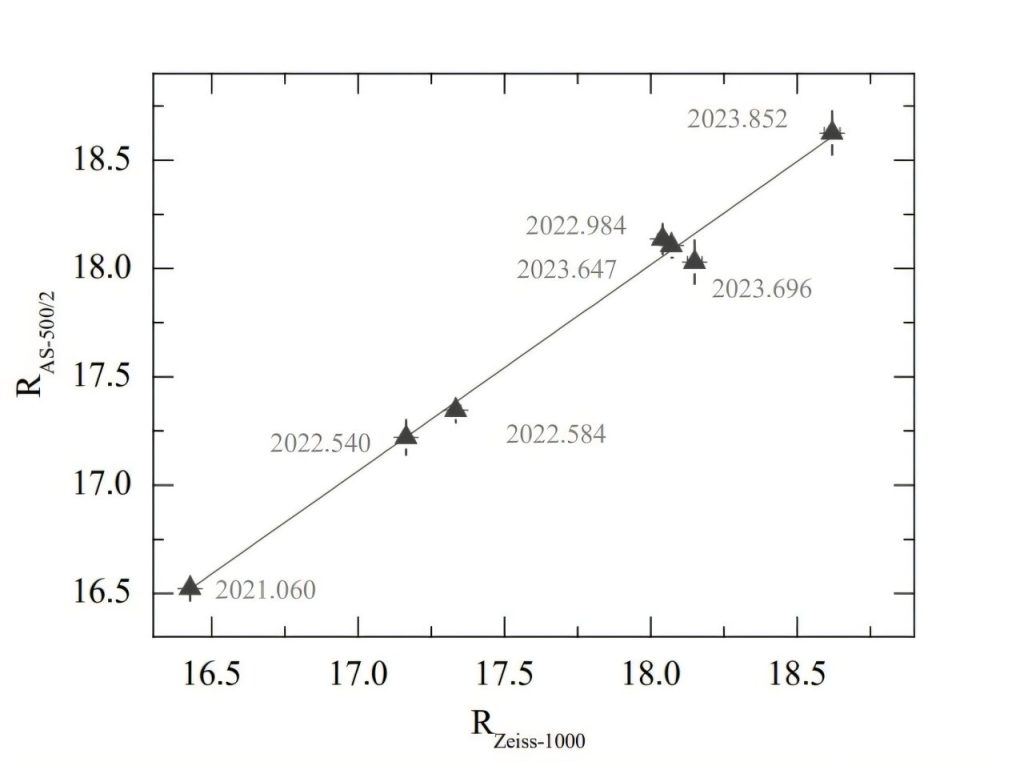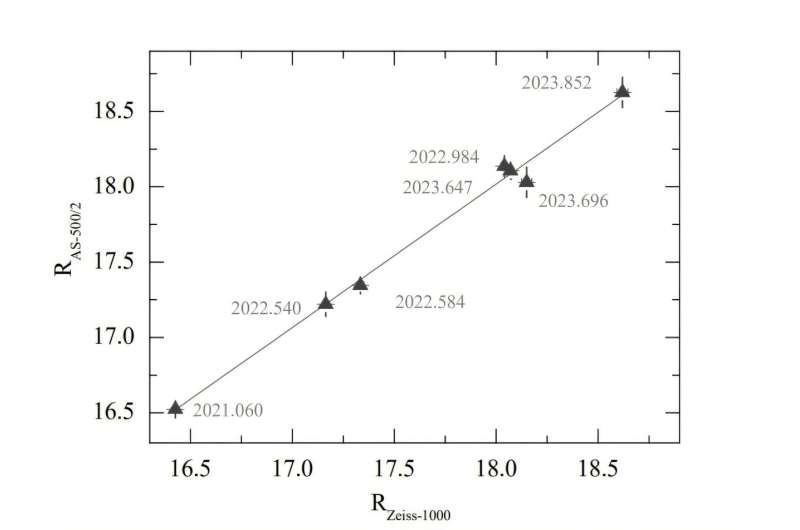
Astronomers investigate long-term variability of blazar AO 0235+164 (Image Credit: Phys.org)

Astronomers have performed a comprehensive multiwavelength study of an extremely variable blazar known as AO 0235+164. Results of the new study, published Nov. 3 on the preprint server arXiv, shed more light on the long-term variability and behavior of this blazar.
Blazars are very compact quasars associated with supermassive black holes (SMBHs) at the centers of active, giant elliptical galaxies. They belong to a larger group of active galaxies that host active galactic nuclei (AGN), and are the most numerous extragalactic gamma-ray sources. Their characteristic features are relativistic jets pointed almost exactly toward the Earth.
Based on their optical emission properties, astronomers divide blazars into two classes: flat-spectrum radio quasars (FSRQs) that feature prominent and broad optical emission lines, and BL Lacertae objects (BL Lacs), which do not.
AO 0235+164 is a blazar located some 7.5 billion light years away in the constellation Aries. Given that AO 0235+164 was identified as a BL Lac object in 1975, it has been extensively studied throughout decades. Observations of this blazar have found that it exhibits extreme variability of non-thermal radiation across all the electromagnetic spectrum, on timescales from less than an hour to several years.
In order to get more insights into the long-term variability of AO 0235+164, a team of astronomers, led by Valery V. Vlasyuk of the Special Astrophysical Observatory (SAO) in Russia, has analyzed multiwavelength data from various SAO telescopes, covering nearly three decades of observations.
“We present a study of the multiwavelength (MW) variability of the blazar AO 0235+164 based on the radio-to-gamma-ray data covering a long time period from 1997 to 2023,” the researchers wrote in the paper.
By examining the light curves of AO 0235+164, the astronomers identified a time lag, which decreases with frequency in the range from 0 to 450 days. The relation between the lag and frequency appears to be best described by a linear fit with a negative slope of −10 days/GHz for the pairs of most radio frequencies versus 230 GHz, 37 GHz, R-band, and gamma rays.
Such behavior is commonly observed in many blazars. Therefore, the authors of the paper assume that the higher-energy emission originates closer to the central object upstream of the blazar’s jet, while lower-energy synchrotron emission seems to be self-absorbed and becomes visible at farther distances downstream from the jet.
Furthermore, the study found a smooth decrease of variability time-scale from radio waves to gamma rays. It turned out that during the low state, the variability time-scale of about 0.4–0.5 years practically does not vary with frequency, which suggests a similar size of the non-thermal emission region for all the bands.
The study also revealed that the highest flux density variations, during years of low activity between 2009 and 2014, occurred in the R-band and gamma rays, reaching 30 and 50%, respectively. The researchers suppose that this variability might be caused by interaction between the remnants of the shocks from major outbursts.
More information:
V. V. Vlasyuk et al, Multiwavelength variability of the blazar AO 0235+164, arXiv (2024). DOI: 10.48550/arxiv.2411.01497
Journal information:
arXiv
© 2024 Science X Network
Astronomers investigate long-term variability of blazar AO 0235+164 (2024, November 12)
retrieved 12 November 2024
from https://phys.org/news/2024-11-astronomers-term-variability-blazar-ao.html
part may be reproduced without the written permission. The content is provided for information purposes only.








